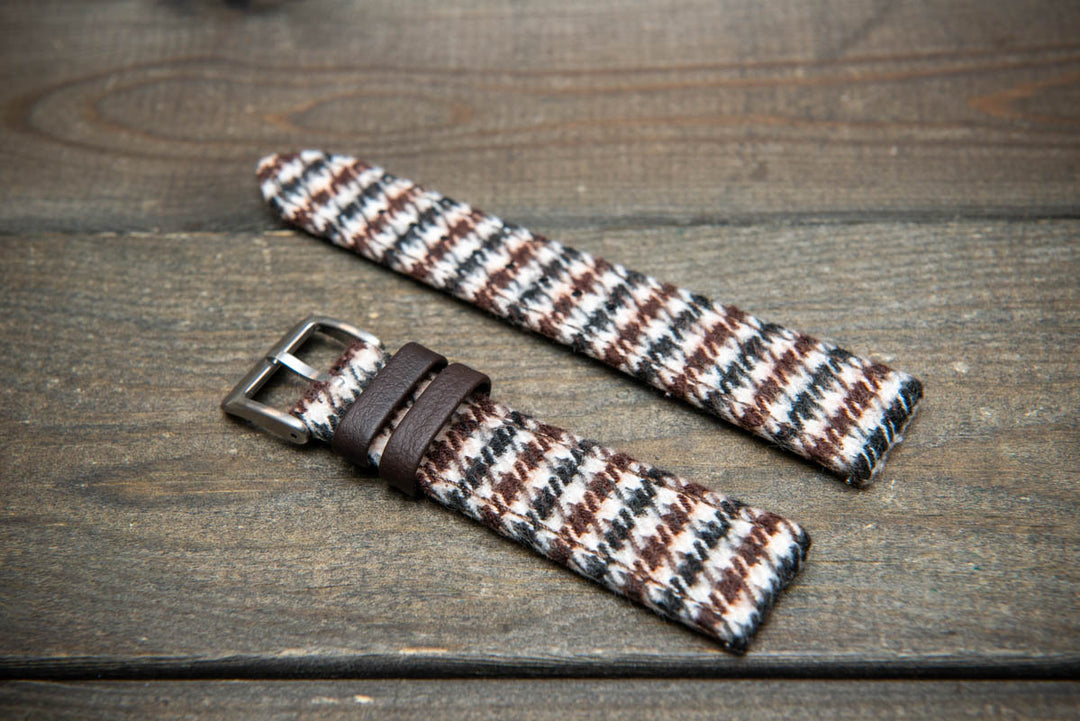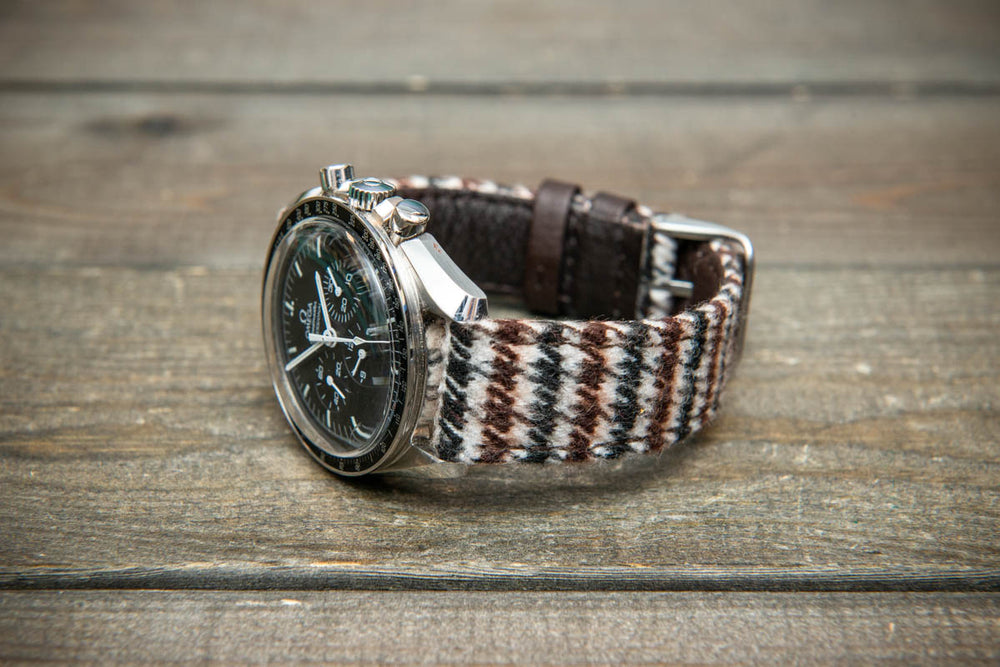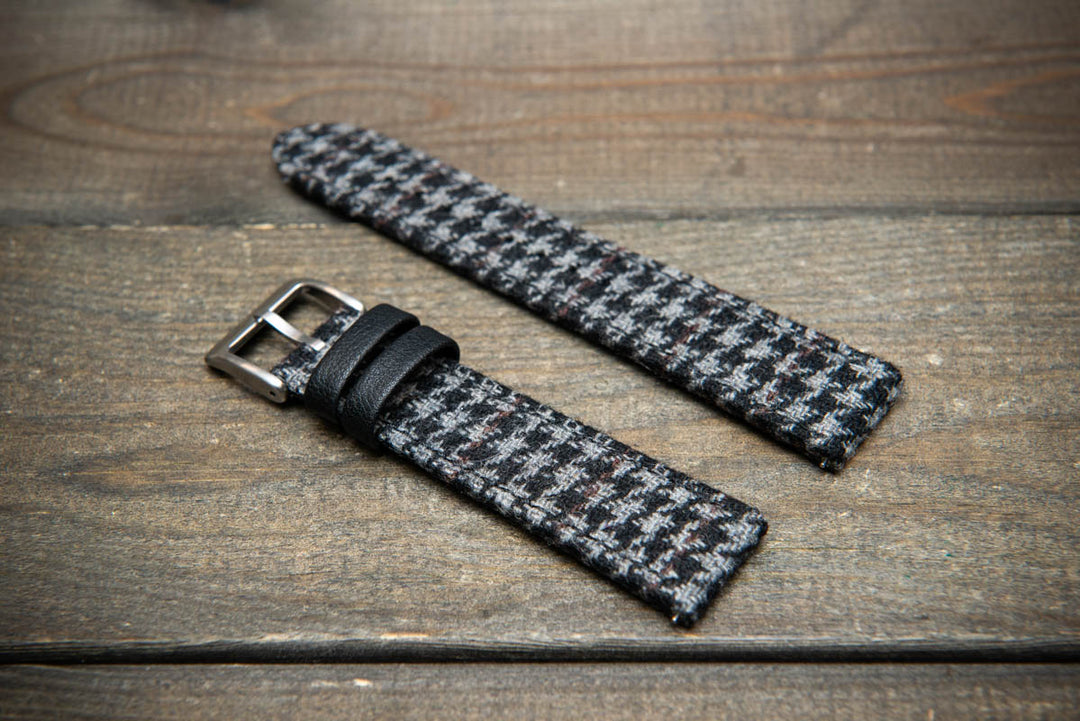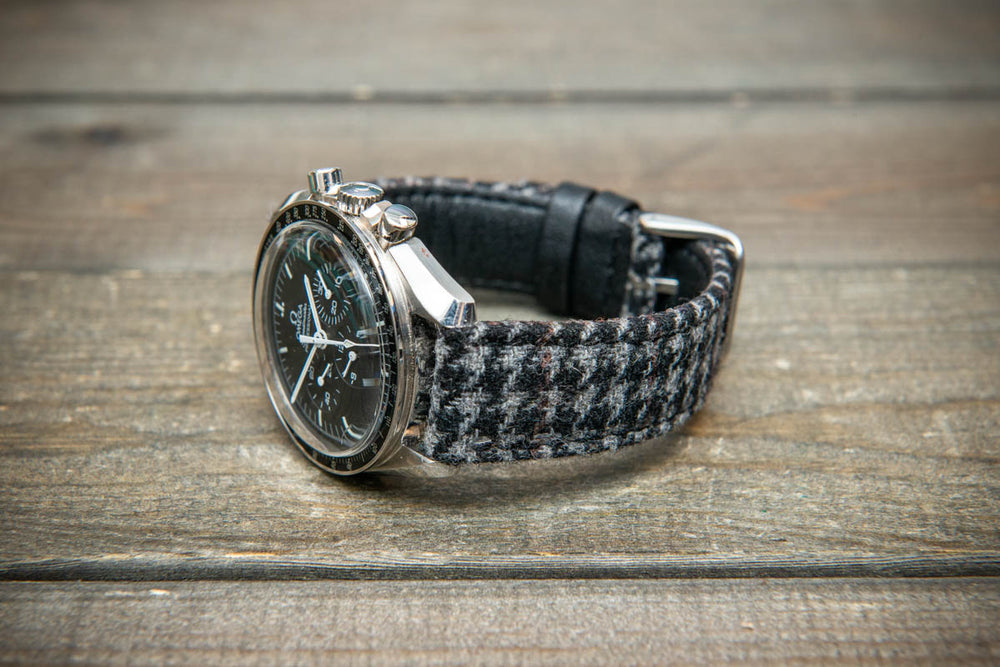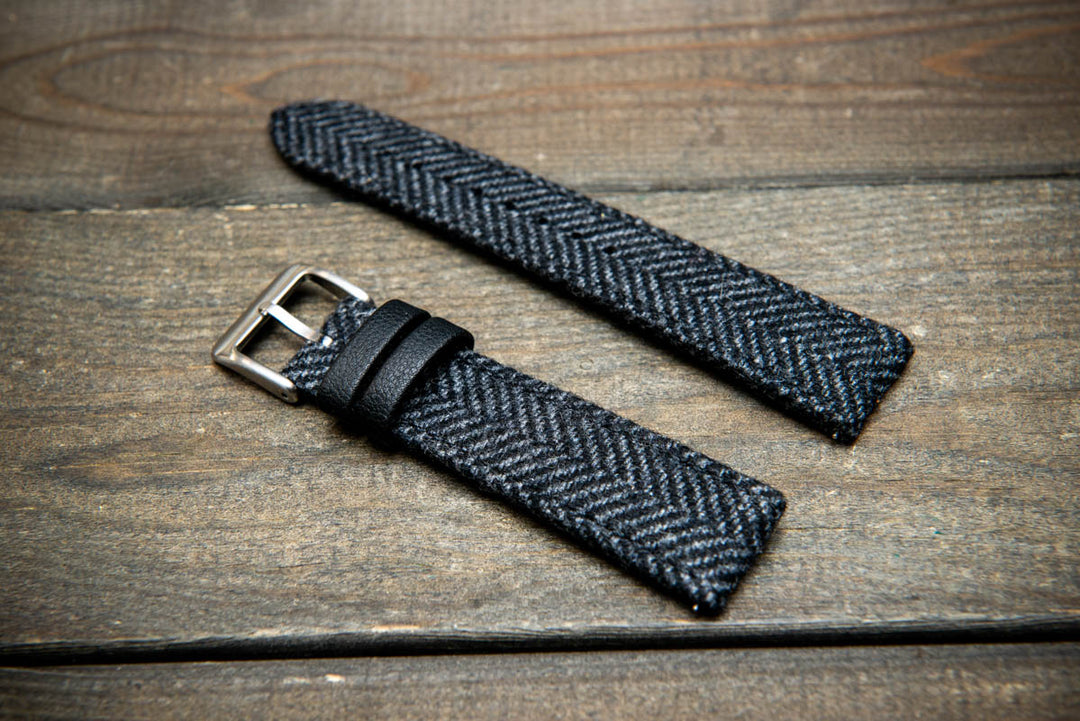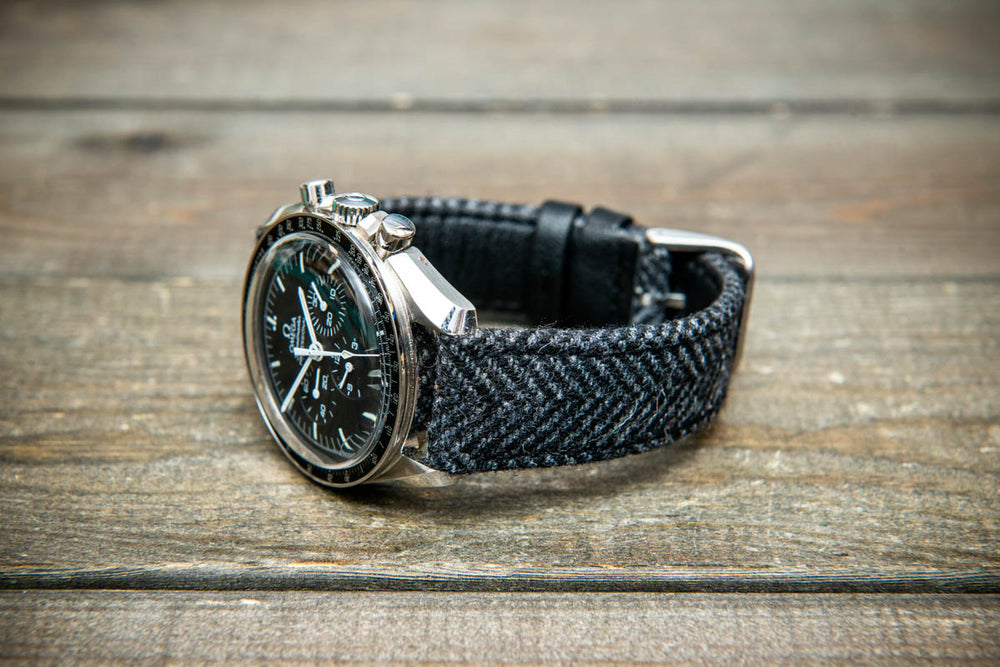Omega Speedmaster Professional Moonwatch: A Legend Tested in Space
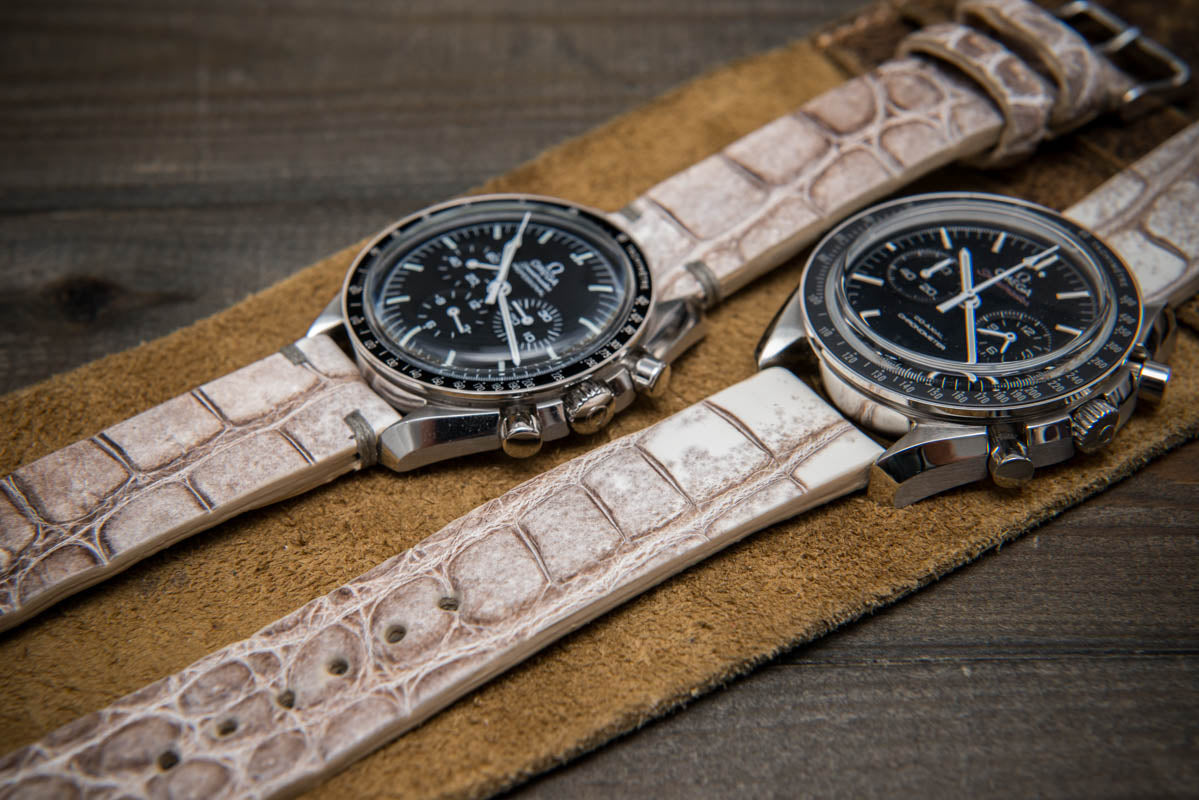
When I hold an Omega Speedmaster, I realize it’s more than just a watch. It is a symbol of human courage, engineering precision, and our eternal drive to reach the stars. The Omega Speedmaster Professional Moonwatch survived NASA’s brutal testing, accompanied astronauts on spacewalks, landed on the Moon, and even helped save Apollo 13.
I often compare the Moonwatch to a Porsche 911 or a Fender Stratocaster. These designs hardly change over decades because there’s nothing to improve. They are perfected.
In this article, I’ll tell the story of the Moonwatch - from its roots in motorsport to its records in space, from the legendary Caliber 321 to today’s Master Chronometer. And of course, how handcrafted straps from FinWatchStraps can highlight their unique character.

Origins: From Racing to the Stars
The First Model CK2915
In 1957, Omega introduced the Speedmaster CK2915: tachymeter on the bezel, Broad Arrow hands, and the robust Caliber 321 made by Lemania. It was meant for racers and engineers - but destiny pointed toward the sky.
First in Space
In 1962, astronaut Wally Schirra took his personal CK2998 on the Mercury-Atlas 8 mission. This was the first time an Omega chronograph went to space, even before NASA certification.
NASA’s Torture Tests
In 1964, NASA began the official search for astronaut watches. Engineer James Ragan designed 11 extreme trials to destroy them:
- temperatures from –18°C to +93°C,
- 95% humidity,
- shocks, vibrations, and noise,
- vacuum and pressure changes,
- exposure to magnetic fields.
Out of Omega, Rolex, Longines-Wittnauer, and Hamilton, only the Omega Speedmaster Professional survived. Rolex failed humidity, Longines failed heat, and Hamilton submitted pocket watches instead of wristwatches.
On March 1, 1965, the Speedmaster was declared Flight-Qualified for All Manned Space Missions. Just three months later, astronaut Ed White wore his Speedmaster 105.003 during the first American spacewalk.

Lunar Glory
On July 21, 1969, Buzz Aldrin stepped onto the Moon’s surface with an Omega Speedmaster Professional ST105.012 on his wrist. Neil Armstrong had left his watch in the lunar module as a backup timer.
From that moment on, the Speedmaster became the Moonwatch - the first and only watch worn on the Moon.
Apollo 13: 14 Seconds that Saved Lives
April 1970. An oxygen tank exploded on Apollo 13. The crew shut down almost all electronics to conserve power. For re-entry, they needed a precise 14-second engine burn.
Astronaut Jack Swigert timed the maneuver with his Omega Speedmaster Moonwatch, while Jim Lovell piloted the spacecraft. Thanks to its accuracy, the crew returned safely.
For this role, Omega received NASA’s prestigious Silver Snoopy Award.
Evolution of the Calibers
-
321 (1957–1969)
A hand-wound column-wheel chronograph, admired by collectors for its beauty. Revived by Omega in 2019 for special editions. -
861 (1969–1996)
More reliable and easier to manufacture, using a cam-actuated system. Worn during many Apollo missions. -
1861/1863 (1996–2020)
Evolution of the 861. Caliber 1863 came with a sapphire back for display. -
3861 (since 2021)
The first Master Chronometer Moonwatch: co-axial escapement, Si14 silicon balance spring, anti-magnetic resistance up to 15,000 gauss, 50-hour power reserve, and METAS certification.
Hesalite vs Sapphire
Modern Omega Speedmaster Professional Moonwatch models come in two versions:
Hesalite (Acrylic)
- historically accurate - the same material used on the Moon,
- domed vintage look,
- scratches can be polished by hand,
- NASA engraving on the caseback,
- around $7,000.
Sapphire (Sapphire Crystal)
- modern, scratch-resistant appearance,
- exhibition caseback to view the movement,
- applied Omega logo,
- around $8,000.
Both are authentic Moonwatch models. The choice depends on whether you value historical accuracy or practicality.

Investment Value
The Omega Speedmaster Moonwatch is more than a tool watch - it’s also an investment.
- Average secondary market price: ~$5,000.
- Vintage Caliber 321 models: tens of thousands of dollars.
- Limited Snoopy Award editions: €40,000–50,000.
- The Tintin edition rose from €2,200 in 2017 to over €15,000.
- The “First Omega in Space” gained value after discontinuation.
Cultural Influence
The Omega Speedmaster Professional is recognized worldwide.
- Worn by George Clooney, Ryan Gosling, Tom Hanks, and countless astronauts.
- Frequently featured in films about space.
- Known among collectors as the “icon of chronographs.”
No other Omega chronograph has a history so closely tied to humanity’s milestones.
Speedmaster and FinWatchStraps
I like to say: “A watch is a suit, and a strap is the tie.”
On a steel bracelet, the Omega Speedmaster Professional Moonwatch is classic. But swap it for a handcrafted strap in alligator, shark, or bison leather, and the watch transforms. The black dial pops with contrast, and the overall look becomes uniquely yours.
At FinWatchStraps, we craft straps individually and by hand. No mass production. Explore our collection of straps for Omega and find the detail that makes your Moonwatch truly personal.
Extended FAQ
Why is the Omega Speedmaster called the Moonwatch?
Because it was the first watch worn on the Moon in 1969.
What makes the Omega Speedmaster Professional special?
It is the only Omega chronograph tested and certified by NASA for all manned space missions.
Which calibers powered the Moonwatch?
321, 861, 1861/1863, and the modern 3861.
Hesalite or Sapphire - which to choose?
Hesalite is authentic, Sapphire is more practical. Both are true Moonwatch models.
Is the Omega Speedmaster Moonwatch good for daily wear?
Yes, the Omega Speedmaster Professional is versatile and fits both formal and casual styles.
Can I swim with a Moonwatch?
It has 50 m water resistance, fine for swimming but not a diving watch.
What strap size fits the Speedmaster?
20 mm for most Moonwatch models.
Are they investment watches?
Yes. Vintage and limited editions often appreciate in value.
Who wears the Speedmaster?
George Clooney, Ryan Gosling, Tom Hanks, and many astronauts.

5 Fun Facts about the Omega Speedmaster Moonwatch
- Buzz Aldrin’s Speedmaster was the first watch on the Moon.
- Omega only learned about NASA’s use after Wally Schirra’s 1962 flight.
- Speedmasters helped save Apollo 13.
- The “Dot over 90” bezel detail is a collector’s favorite.
- Russian cosmonaut Gennady Padalka wore a Moonwatch for 879 days in space - a record.
The Omega Speedmaster Professional Moonwatch is more than a chronograph. It bridged motorsport and space exploration, survived NASA’s toughest tests, became the first watch on the Moon, and saved Apollo 13.
If you want to add individuality to your Moonwatch, pair it with a handcrafted strap. Visit our Omega strap collection and make your Omega chronograph even more legendary












